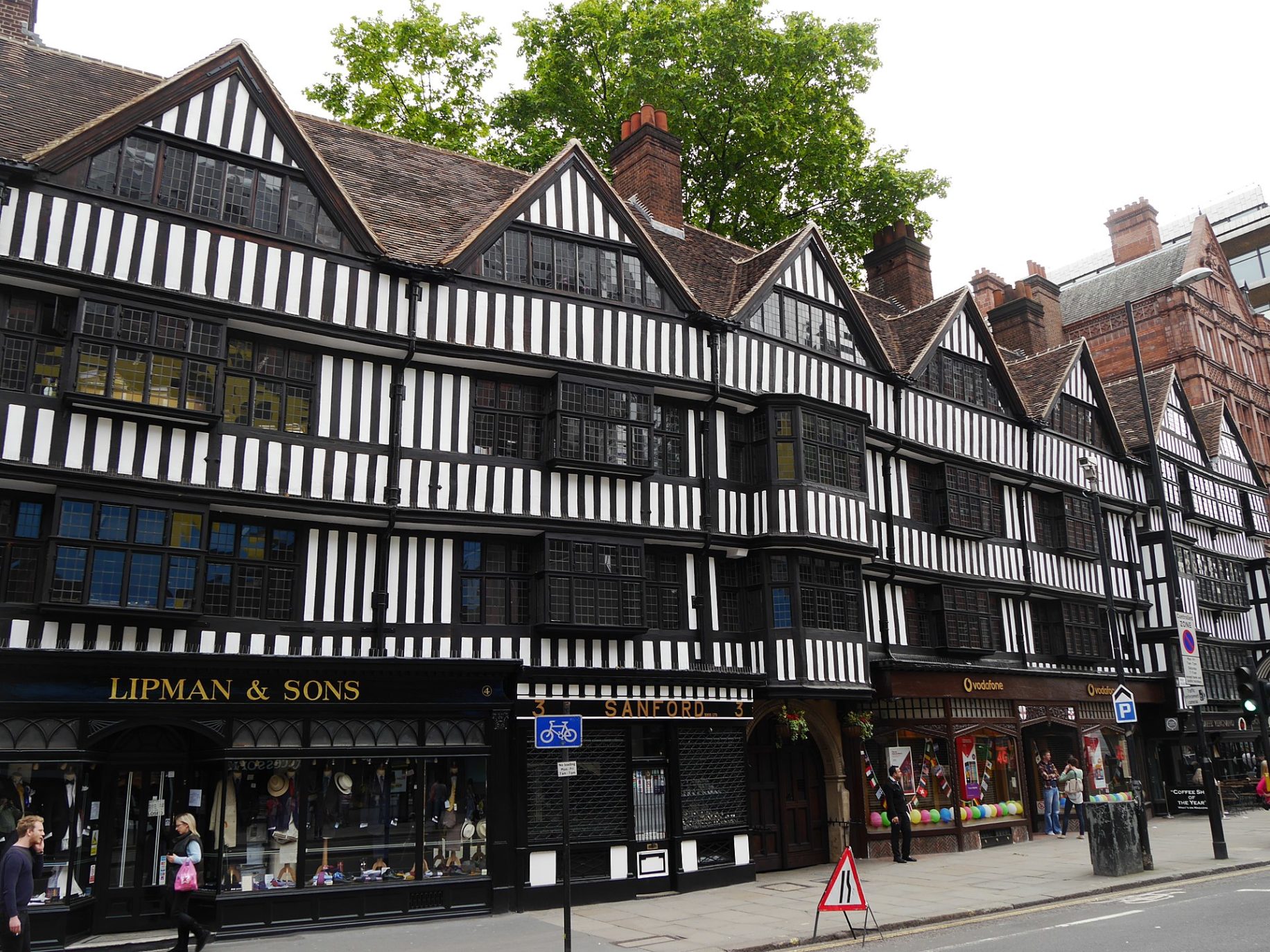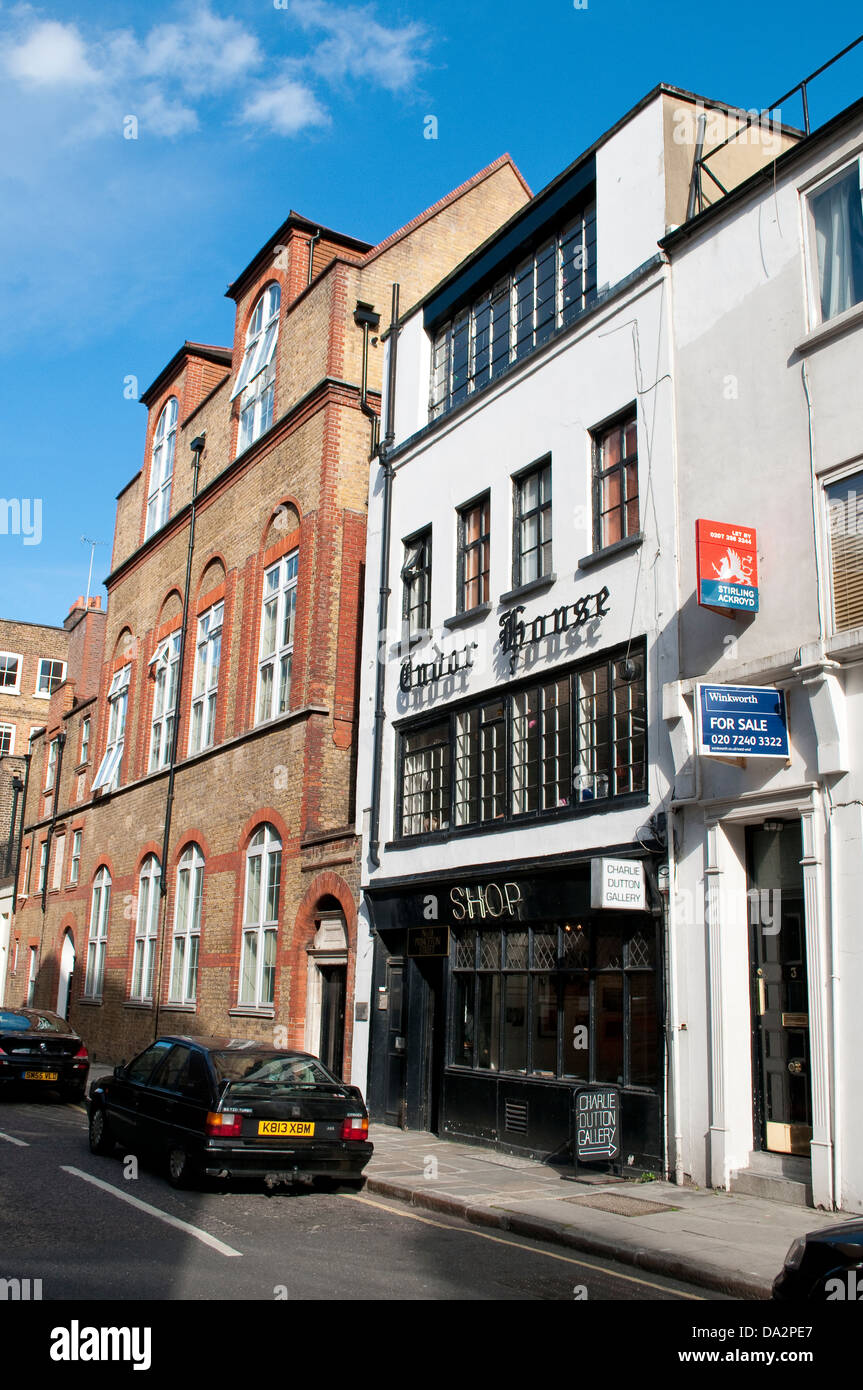
Surveying Property Tudor Houses Timber Frame Construction
Sutton House is a National Trust property in Hackney. That would be unusual enough but it's a Grade II* listed Tudor manor house. Yes, there's a Tudor house in east London. Despite its misleading Georgian frontage, this 16th-century home has nearly 500 years of history. A rare example of a Tudor red-brick house, it was built by a courtier.

Tudor Houses
St. James's Palace. St. James's Palace is one of the many Tudor houses in London. Henry VIII commissioned the building of St. James's Palace in 1531. It was intended to be a smaller residence where the king could escape formal court life. However, the palace evolved to become the principal royal residence in London for over 300.

Kings Norton Birmingham England Tudor house, Architecture, British architecture
Enlarge / Artist's reconstruction of Thomas Cromwell's mansion on Throgmorton Street in 1539, London, England. Tudor England was a treacherous place for ambitious courtiers, as the steady rise and.

Tudor House, 35 Gresse Street, Fitzrovia, London, Office, To Let Mellersh & Harding
Credit: World History Archive/Alamy. In East London's Hackney, one beneficiary of the Tudor king's favour can still be explored today. Sutton House was built in the 1530s as a country house for Henry VIII's courtier Sir Ralph Sadler (or Sadleir), who started out as a protégé of the statesman Thomas Cromwell. Sadler joined Cromwell's.

York 360° Sir Thomas Herbert's House. Tudor York. Tudor house, Tudor style homes, London
The Tudor House & Garden, located in Southampton, England, is a museum initially constructed in the 1490s and has been fully restored to its original glory.. The Tudor Revival style of Liberty London is evident from its black and white timber framing and the building's façade, which is decorated with intricate and elaborate carvings, such.

Ye Olde Tudor House Walthamstow Village London (1) by BengaliSvengali on DeviantArt
History-making days out from £16 per adult. Explore 19 acres of award-winning gardens and step inside the striking art deco mansion. Once a favoured medieval palace and then a Tudor royal residence, in the 1930s Eltham Palace was transformed by eccentric millionaires Stephen and Virginia Courtauld. Get a taste of the Courtaulds' extravagant.

Tudor Houses Eltham London editorial photography. Image of architectural 167678767
Henry VII, the first Tudor king, made the palace at Greenwich even larger. He covered the whole palace with a new facing of red brick. It became a favourite palace of the Tudors, partly because it was close to the royal shipyards on the River Thames. Henry VII's son, the future Henry VIII, was born at the palace on 28 June 1491.

Tudor houses were built during the Tudor era in England between 1485 1603 and they had a very
The Tudor house is the oldest residential building in the London borough Hackney. The Tudor manor house was built in 1535 by Sir Ralph Sadler, Principal Secretary of State to Henry VIII. The rich history of the house can now be visited.

The Ancient House in Walthamstow Village. London. It was built in the 15th century Medieval
6) St. James' Palace. Henry VIII commissioned St. James' Palace to be built between 1531 and 1536, making it mostly Tudor in architectural style. It was designed to be smaller than Henry's huge new palace, Whitehall, and used as a more peaceful and quiet residence for the monarch. Elizabeth I also stayed at St. James' regularly.

Tudor London Top 10 Tudor Buildings in London Londontopia
Sutton House, London One of London's last remaining Tudor houses, Sutton House was built in 1535 by Sir Ralph Sadleir. A close aide of Thomas Cromwell, by 1540 he was Secretary of State to Henry VIII - and this was his family home. Immerse yourself in the atmosphere of a Tudor home as you explore oak-panelled chambers and robust fireplaces.

Tudor London Top 10 Tudor Buildings in London Londontopia
Upstream from London, this Thames-side royal palace is a combination of two magnificent buildings: a Tudor red-brick mansion plus a 17th-century baroque section designed by Sir Christopher Wren.

Rebecca Tay I love London buildings
In the Guildhall Art Gallery you can find a bright, enlarged version of one of the earliest maps of London. The Guildhall Art Gallery. It is known as the Agas map and depicts Tudor London in 1561. It was once wrongly attributed to cartographer Ralph Agas and the name stuck. Printed using 8 wood blocks, it measures about 2 metres in length.

Tudor Houses Tudor Houses in London dees003 Flickr
Standing proudly at the entrance to one of the oldest churches in the City lies St Bartholomew's gatehouse, a rare survivor of Tudor London. The church that the gatehouse protects, St Bartholomew-the-Great, was founded in 1123 as an Augustinian priory. Although remaining relatively unscathed for the first few centuries of its existence, the.

What Is a Tudor Home? Apartment Therapy
Boy, does the Tower of London have a tale or two to tell. Although it wasn't built in the Tudor times (construction began in the 11 th century), the Tudors certainly stamped their mark.. Until then, the Tower of London had been a royal palace, guarding regal possessions and even housing a polar bear in the 13 th century. But once the Tudors got their hands on it, the iconic castle became a.

Tudor House, Princeton Street, Holborn, London, UK Stock Photo Alamy
The House of Tudor (/ ˈ tj uː d ər /) was a dynasty of largely Welsh and English origin that held the English throne from 1485 to 1603. They descended from the Tudors of Penmynydd and Catherine of Valois.The Tudor monarchs ruled the Kingdom of England and its realms, including their ancestral Wales and the Lordship of Ireland (later the Kingdom of Ireland) for 118 years with five monarchs.

The Queens residence, the royal house in the Tower. And the last original Tudor house in London
Lambeth Palace. Certainly one of the grandest Tudor residences that still fulfills that role, Lambeth Palace has been the London home of the Archbishop of Canterbury since roughly 1200 AD when it became the home of the Community of St. Anselm whose patron is the Archbishop. Being so old, the building has many different architectural styles.